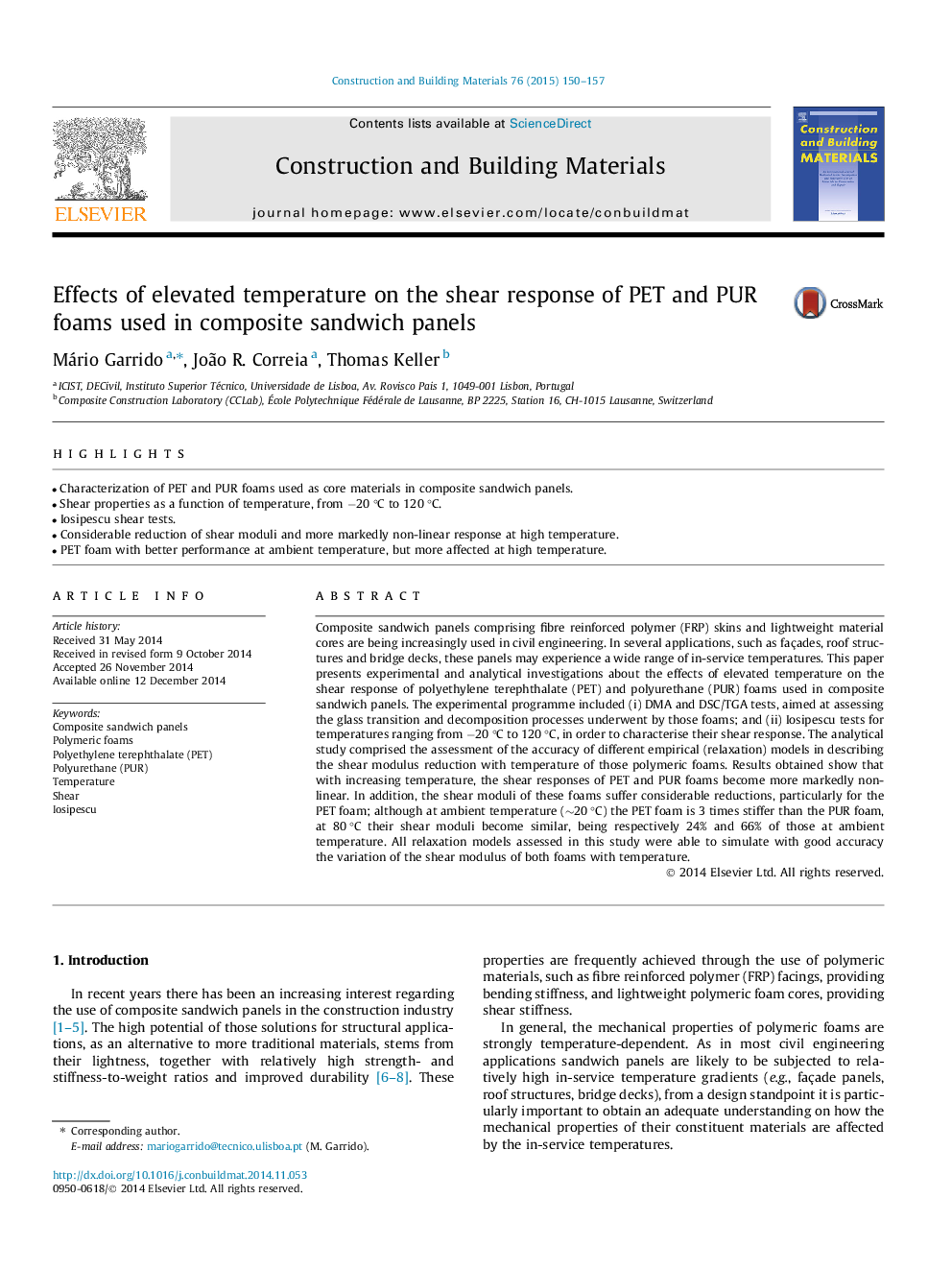| کد مقاله | کد نشریه | سال انتشار | مقاله انگلیسی | نسخه تمام متن |
|---|---|---|---|---|
| 257229 | 503580 | 2015 | 8 صفحه PDF | دانلود رایگان |

• Characterization of PET and PUR foams used as core materials in composite sandwich panels.
• Shear properties as a function of temperature, from −20 °C to 120 °C.
• Iosipescu shear tests.
• Considerable reduction of shear moduli and more markedly non-linear response at high temperature.
• PET foam with better performance at ambient temperature, but more affected at high temperature.
Composite sandwich panels comprising fibre reinforced polymer (FRP) skins and lightweight material cores are being increasingly used in civil engineering. In several applications, such as façades, roof structures and bridge decks, these panels may experience a wide range of in-service temperatures. This paper presents experimental and analytical investigations about the effects of elevated temperature on the shear response of polyethylene terephthalate (PET) and polyurethane (PUR) foams used in composite sandwich panels. The experimental programme included (i) DMA and DSC/TGA tests, aimed at assessing the glass transition and decomposition processes underwent by those foams; and (ii) Iosipescu tests for temperatures ranging from −20 °C to 120 °C, in order to characterise their shear response. The analytical study comprised the assessment of the accuracy of different empirical (relaxation) models in describing the shear modulus reduction with temperature of those polymeric foams. Results obtained show that with increasing temperature, the shear responses of PET and PUR foams become more markedly non-linear. In addition, the shear moduli of these foams suffer considerable reductions, particularly for the PET foam; although at ambient temperature (∼20 °C) the PET foam is 3 times stiffer than the PUR foam, at 80 °C their shear moduli become similar, being respectively 24% and 66% of those at ambient temperature. All relaxation models assessed in this study were able to simulate with good accuracy the variation of the shear modulus of both foams with temperature.
Journal: Construction and Building Materials - Volume 76, 1 February 2015, Pages 150–157